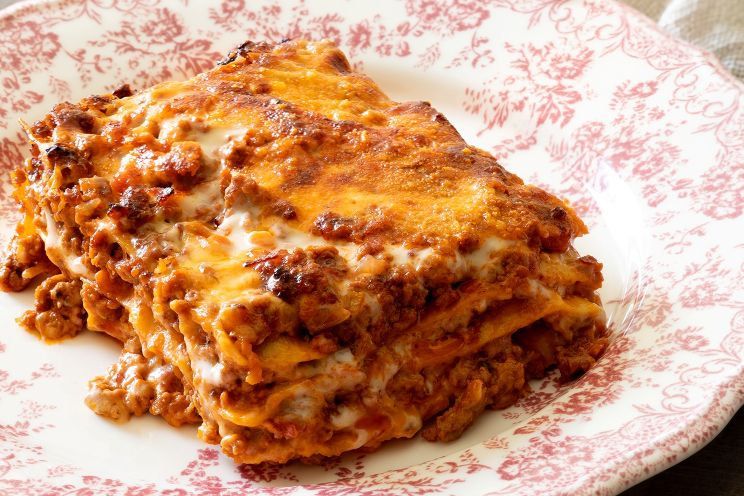My private Italy: in Emilia… Eat like an Emilian!

When you hear “Emilia Romagna,” the first thing that comes to mind for most Italians is hospitality. And rightly so—this region has long been Italy’s holiday haven, thanks to its sweeping coastline along the Adriatic Sea. Generations of Italian families, along with countless visitors from Germany, the Netherlands, Sweden, and Denmark, have spent their summers here, coming back again and again. But what is it about this land—and this sea, not exactly the Caribbean—that keeps drawing people in?
Well, local comedian Paolo Cevoli once called it “Romagna Marketing.” And what does that mean? Simple: love, fun, and great food. Isn’t that the essence of marketing? Make people feel loved, treat everyone like family, and offer them the best of what you have.
So, the people of Emilia Romagna turned their everyday life into one of the world’s most beloved lifestyles. They built a reputation on joy, warmth, generosity—and above all—food.
This is why Emilia Romagna is known as Italy’s “Food Valley”, a title well-earned thanks to its world-famous culinary traditions that range from gourmet dining to rustic street food. The region’s devotion to cuisine is such that there are 25 museums dedicated entirely to the pleasures of food.
Let’s begin with the name itself—Emilia Romagna. The region is split between Emilia in the west and Romagna in the southeast, which includes the entire coast. Parma, Modena, and Bologna are part of Emilia; Ravenna, Ferrara, and Rimini belong to Romagna. Each area brings something iconic to the table.
Parma: Where Cured Meats and Cheese Reign Supreme
Parma’s rolling hills are home to Prosciutto di Parma, its most famous product. Meanwhile, the lush “Bassa Parmense” area produces the delicate Culatello di Zibello, Salame di Felino, and Spalla Cotta di San Secondo. And who could forget Parmigiano Reggiano, a legendary cheese still made today using techniques passed down since the 12th century?
Parma also boasts more elusive treasures like the Black Truffle of Fragno and Porcini mushrooms from the Apennines—gems of the forest, with the latter earning PGI status (Protected Geographical Indication) from the EU.
Gnocco Fritto & Tigelle: Emilia’s Handheld Delights
Cured meats and cheeses are best enjoyed with two local staples: Gnocco Fritto and Tigelle. The first is diamond-shaped fried dough, crispy on the outside, perfect for stuffing with your favorite salumi and cheese. The second are small round breads, sliced and filled with endless combinations of savory fillings. No forks allowed—these are meant to be eaten with your hands!
Bologna: The Home of Fresh Pasta
Travel east to Bologna, the land of fresh egg pasta and the legendary “rezdore”—grandmothers who pass down the art of pasta-making through generations.
Lasagna is the crown jewel here: golden sheets of pasta layered with ragù, béchamel, and Parmigiano. The secret to a perfect ragù? Time. It’s slow-cooked, never rushed—just like Sunday lunch with family.
If lasagna’s too rich for the moment, there’s Tagliatelle, or its cousins: Tagliolini, Pappardelle, and Fettuccine—all delicious with ragù or mushrooms.
In winter, try Tortellini in brodo or Anolini, both warm, comforting dishes served in rich meat broth. Tortellini are stuffed with pork, prosciutto, mortadella and Parmigiano; Anolini, a Parma specialty, are filled with braised beef and Grana Padano.
Ferrara, Ravenna, and the Mystery Border of Romagna
Beyond Bologna lies an invisible line dividing Emilia from Romagna. Some say it’s the Santerno River, others claim it starts in Imola. No matter where it begins, Romagna brings a different energy—and flavor.
In Ferrara, food reflects its Renaissance past. Try Torta di Maccheroni, Cappellacci di Zucca (pumpkin-stuffed pasta), or the more adventurous Risotto with Coot and Eel. A true local specialty? Salama da Sugo, a rich, spiced pork sausage cooked and served with creamy mashed potatoes.
In Ravenna, pasta is king: Strozzapreti, Passatelli, Cappelletti, all homemade and bathed in either ragù or delicate broths. Comfort food, Romagna-style.
Rimini: Where the Beach Meets the Piadina
Eventually, all roads in Romagna lead to Rimini, and all appetites to the iconic Piadina—a flatbread that defines Romagna’s soul. Originally a peasant staple, it’s now a beloved street food. Warm, chewy, and perfect with prosciutto, squacquerone cheese, and arugula, it’s impossible to eat just one.
One Wine to Pair Them All: Lambrusco
With so many flavors, you might wonder what to drink. The answer is Lambrusco, the region’s pride. Grown around Modena, Reggio Emilia, and Parma, this sparkling red is refreshing, slightly fizzy, and surprisingly versatile. Dry Lambrusco pairs beautifully with pastas like Tortelloni or Lasagna, while its more robust versions are ideal for red meats.
Second Courses: Zampone & Pollo alla Cacciatora
Ready for the main course? Try Zampone, a seasoned pork sausage encased in the pig’s leg skin, boiled and served with lentils and mashed potatoes—a must-have on New Year’s Eve. As a child, I remember waiting for midnight, playing Tombola, just to finally taste it.
Or go for Pollo alla Cacciatora, a rustic chicken stew from the Romagna hills, slow-cooked with onions, tomatoes, black olives, sage, and white wine.
Sweet Endings: Torta Barozzi, Zuppa Inglese, Tenerina
And now, dessert. Start with Torta Barozzi, a mysterious chocolate-almond cake from Modena with a top-secret recipe dating back to 1886. Rich and dense, it’s unforgettable.
Or choose Zuppa Inglese, a layered dessert of sponge cake soaked in alchermes, custard, and chocolate. Despite the name (“English Soup”), it’s 100% Italian—and 100% delicious.
Finally, there’s Tenerina, Ferrara’s beloved chocolate cake. Its name means “little tender one,” and once you taste its soft, melt-in-your-mouth texture, you’ll understand why.
I’ve lost count of how many times I’ve been to Romagna. Not once have I returned disappointed. Emilia Romagna is a region you don’t just visit—you fall in love with. It’s a place of passion: for food, for tradition, for beauty, for life.
Emilia Romagna, I miss you. I’ll be back soon—very soon.



